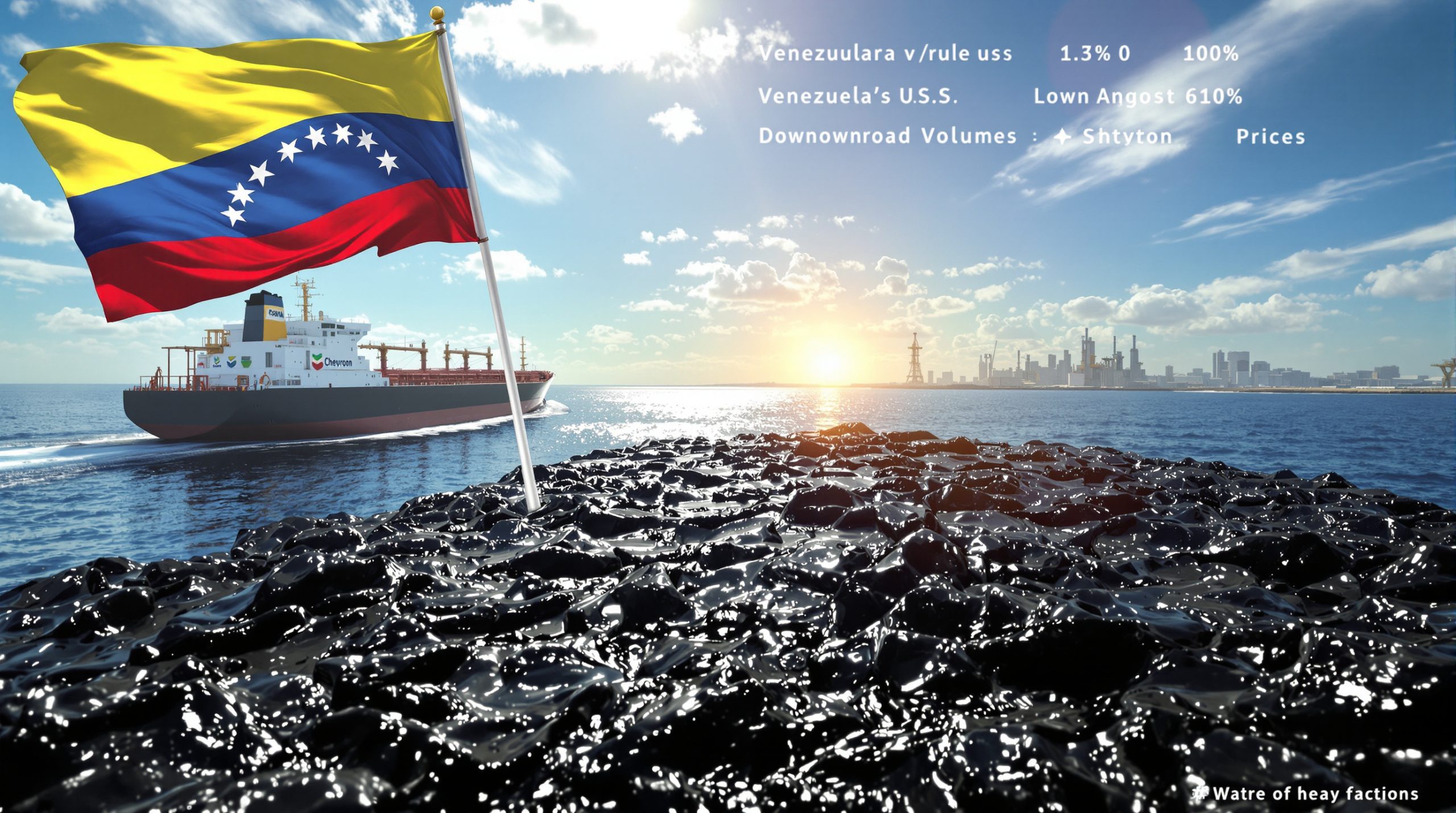What is B2Gold's Goose Mine and Why Does it Matter?
B2Gold's Goose Mine represents a strategic expansion into Canada's gold mining landscape, marking a significant diversification of the company's global portfolio. Located in the mineral-rich Back River gold district of Nunavut, this operation has established itself as B2Gold's first Canadian mining venture and fourth active mine worldwide. The project exemplifies the company's strategic pivot toward stable mining jurisdictions while maintaining its international presence.
The Back River gold district has long been recognized for its substantial gold potential, with the Goose Mine representing just the first phase of what industry analysts believe could be a district-scale development opportunity. By establishing operations in Nunavut, B2Gold gains exposure to one of Canada's emerging gold frontiers while balancing geopolitical risks associated with its operations in Mali, the Philippines, and Namibia.
As CEO Clive Johnson noted in a recent statement: "The commencement of gold production at the Goose mine marks an exciting step in B2Gold's history, further diversifying and adding to the quality of the company's existing global operating portfolio."
This Canadian expansion comes at a strategic time for B2Gold, coinciding with production challenges at its Otjikoto mine in Namibia, where depleting open-pit reserves have necessitated workforce reductions. The Goose Mine represents not just a new production asset but a potential cornerstone of the company's long-term growth strategy in North America.
The Inaugural Gold Pour: A Milestone Achievement
On June 24, 2025, B2Gold achieved a historic milestone with the first gold pour at its Goose Mine. This achievement represents the culmination of years of development work, environmental assessments, community consultations, and construction in one of Canada's most challenging mining environments.
The inaugural pour carries significance beyond the mere production of gold. It marks:
- B2Gold's successful entry into Canadian gold production after decades of international operations
- The company's strategic shift toward establishing a stronger presence in Tier 1 mining jurisdictions
- A significant addition to Nunavut's growing mining sector, which has emerged as a key economic driver for the territory
- The successful navigation of complex permitting, logistics, and construction challenges in an Arctic environment
B2Gold President and CEO Clive Johnson emphasized the achievement's importance, stating: "I am pleased to announce that the Goose mine has achieved its inaugural gold pour, a true milestone for our staff and our partners who have worked tirelessly to reach this achievement."
The first gold production comes after a carefully orchestrated construction phase that had to account for Nunavut's extreme seasonal limitations, where materials could only be delivered during brief summer windows via sealift operations through the Northwest Passage.
Current Production Status and Ramp-Up Timeline
The Goose Mine is currently operating at approximately 50% of its designed capacity, in line with B2Gold's strategic implementation plan. This measured approach to production ramp-up is deliberate, allowing for:
- Systematic testing and optimization of all processing circuits under actual operating conditions
- Integration of additional power generation capacity to support full-scale operations
- Identification and resolution of operational bottlenecks before pushing toward maximum throughput
- Training and development of the workforce, with particular focus on local Inuit employees
The processing facilities successfully treated their first ore on June 24, 2025, marking the beginning of a carefully managed ramp-up sequence. This phased approach reflects industry best practices for commissioning new mines, especially in remote locations where equipment replacements and technical support cannot be rapidly deployed.
B2Gold's operations team is focusing on stabilizing all aspects of the production process before incrementally increasing throughput rates. This methodical strategy prioritizes operational reliability over immediate production maximization—a particularly prudent approach given the mine's remote Arctic location and challenging logistics environment.
How Will the Goose Mine Scale to Full Production?
The transition from initial production to full commercial operations involves several critical phases and technical considerations that will determine the Goose Mine's long-term success. B2Gold has developed a comprehensive ramp-up strategy that addresses the unique challenges of operating in Nunavut's extreme environment.
The company's approach balances technical optimization with the practical realities of Arctic mining, where weather conditions can significantly impact operational continuity. Unlike mines in more temperate regions, the Goose operation must account for potential supply chain disruptions during winter months and ensure sufficient redundancy in critical systems.
Industry analysts have noted that B2Gold's experience with remote operations in Mali and the Philippines provides valuable expertise for the Goose ramp-up, though Nunavut presents unique challenges even for experienced operators. The company's track record of successful mine commissionings offers confidence in its ability to navigate this critical phase.
Q3 2025: The Path to Commercial Production
B2Gold has outlined specific objectives for the third quarter of 2025, focusing on achieving commercial production status at the Goose Mine. These milestones include:
- Achieving steady-state operations across all processing circuits, with consistent throughput rates and recovery percentages
- Completing the integration of additional generators to provide sufficient power for full production capacity
- Optimizing metallurgical recovery rates through fine-tuning of reagent usage and processing parameters
- Reaching design specifications for throughput and recovery on a consistent basis
- Officially declaring commercial production status once operational stability is demonstrated
The company has implemented a structured commissioning plan that systematically addresses each aspect of the operation, from crushing and grinding to leaching and recovery circuits. This approach allows technical teams to isolate and resolve issues without compromising the entire production flow.
Power generation represents a particularly critical component of the ramp-up plan. The remote location necessitates on-site power production, with diesel generators providing the primary energy source. The integration of additional generating capacity must be carefully synchronized with increasing production demands to prevent energy shortfalls.
Production Projections and Long-Term Outlook
B2Gold has established clear production targets for the Goose Mine based on its current understanding of the orebody and processing capabilities:
| Time Period | Production Target | Notes |
|---|---|---|
| 2025 (Partial Year) | 120,000-150,000 ounces | Reflects ramp-up phase |
| 2026-2031 (First Six Full Years) | ~300,000 ounces annually | Based on current reserves only |
| Beyond 2031 | To be determined | Dependent on exploration success |
These projections are based solely on currently defined mineral reserves, suggesting significant potential upside as exploration activities continue to define additional resources within the Back River gold district. The production profile positions Goose as a meaningful contributor to B2Gold's overall portfolio, potentially accounting for approximately 25-30% of the company's total gold market performance once at full capacity.
Industry analysts have noted that the production guidance appears conservative, particularly given the high-grade nature of some portions of the deposit. This approach aligns with B2Gold's track record of providing achievable targets and potentially delivering outperformance—a strategy that has served the company well at its other operations.
Disclaimer: Production projections involve forward-looking statements based on current understanding of the deposit. Actual results may vary based on geological conditions, processing performance, and other operational factors.
What Makes the Back River Gold District Strategically Important?
The Back River gold district represents one of Canada's most promising untapped gold regions, with geological characteristics suggesting significant potential beyond the current Goose Mine operation. Located in Nunavut's western region, this district has attracted increasing attention from major mining companies seeking high-grade gold opportunities in stable jurisdictions.
The district's strategic importance stems from several factors:
- High-grade gold mineralization comparable to other prolific Canadian gold districts
- Multiple defined deposits beyond the current Goose operation
- Relatively unexplored status compared to more established mining regions
- Potential for district-scale development with shared infrastructure
- Location within a stable Canadian mining claims framework
These factors combine to create what industry experts consider a rare opportunity: a high-grade gold district with multiple development prospects in a politically stable environment. While operational challenges exist due to the remote location, the geological potential offers compelling long-term value.
Exploration Investment and Future Potential
B2Gold has demonstrated its confidence in the district's potential through significant exploration commitments:
- C$61 million ($44.5 million) allocated for corporate exploration across all properties in 2025
- C$32 million specifically earmarked for Back River gold district exploration
- Focused drilling programs targeting resource expansion at Goose and satellite deposits
- Regional exploration to identify new mineralized zones throughout the district
This substantial exploration budget—representing over half of B2Gold's global exploration spending—underscores the company's belief in the district's long-term potential. The exploration program aims to both extend the life of the current Goose operation and identify additional development opportunities within the broader land package.
CEO Clive Johnson emphasized this potential: "We look forward to many years of safe and successful production at the Goose mine, as well as further unlocking the value of the entire Back River gold district."
The exploration strategy includes both near-mine drilling to expand existing reserves and regional programs to test earlier-stage targets. Historical exploration in the district has identified multiple mineralized zones that warrant follow-up investigation, providing numerous opportunities to expand the resource base.
Regional Infrastructure and Development Considerations
The development of mining operations in Nunavut presents unique challenges and opportunities related to infrastructure:
- Remote location requiring specialized logistics solutions, including seasonal sealift operations
- Extreme climate conditions with winter temperatures frequently reaching -40°C or lower
- Limited existing infrastructure necessitating significant capital investment in power generation, accommodations, and processing facilities
- Potential for regional economic development through the establishment of transportation corridors and energy infrastructure
These infrastructure challenges contribute to higher capital and operating costs compared to mines in more accessible regions. However, they also create barriers to entry that limit competition and provide first-movers like B2Gold with strategic advantages in securing the most promising land positions.
The company's infrastructure investments at Goose—including power generation, accommodations, and processing facilities—create a potential hub for future development throughout the district. Additional deposits could potentially utilize this established infrastructure, improving the economics of subsequent development projects.
How is B2Gold Partnering with Indigenous Communities?
The development of the Goose Mine has been characterized by significant engagement with local Indigenous organizations, particularly the Kitikmeot Inuit Association (KIA). This partnership approach reflects both regulatory requirements in Nunavut and B2Gold's corporate philosophy regarding community relations.
In Nunavut, where approximately 85% of the population is Inuit, meaningful Indigenous partnership is not merely a corporate social responsibility initiative but a fundamental business requirement. The territory's unique governance structure grants Inuit organizations significant authority over land use and resource development decisions.
B2Gold has approached this context as an opportunity rather than a constraint, working to build relationships based on mutual respect and shared benefits. This approach aligns with broader industry trends toward meaningful Indigenous participation in resource development projects.
The Critical Role of the Kitikmeot Inuit Association
The Kitikmeot Inuit Association (KIA) has been instrumental in facilitating the development of the Goose Mine through several key mechanisms:
- Land tenure agreements governing access to and use of Inuit-owned lands
- Impact and benefit agreements establishing commitments for employment, training, and business opportunities
- Environmental stewardship collaboration, incorporating traditional knowledge into monitoring programs
- Ongoing consultation regarding operational decisions affecting Inuit interests
- Cultural preservation initiatives ensuring mining activities respect significant sites and practices
The relationship with the KIA is not merely advisory but represents a true partnership with material implications for the project's development. As noted in company statements: "Cooperation with the KIA is essential for B2Gold's license to operate in the region."
This partnership approach represents an evolution in Indigenous relations within the mining sector, moving beyond consultation toward meaningful participation and shared decision-making. The KIA's role extends beyond the approval phase to ongoing involvement throughout the mine's operational life.
Community Benefits and Sustainable Development
B2Gold has emphasized its commitment to operating in alignment with Inuit priorities through concrete mechanisms that deliver tangible benefits:
- Prioritized hiring and training programs for Inuit workers, with targeted recruitment in Kitikmeot communities
- Business development initiatives supporting Inuit-owned enterprises in the supply chain
- Cultural awareness training for all employees to foster respect for Inuit traditions and values
- Environmental protection measures reflecting Indigenous perspectives on land stewardship
- Infrastructure investments with potential community benefits beyond mining activities
These initiatives aim to ensure that the Goose Mine creates lasting positive impacts for Kitikmeot communities while respecting Inuit cultural values. The company's approach recognizes that sustainable mining requires maintaining a social license to operate through demonstrated respect for community priorities.
B2Gold's engagement with Indigenous communities also extends to knowledge-sharing regarding environmental monitoring and management. Traditional ecological knowledge has been incorporated into baseline studies and monitoring programs, creating a more comprehensive understanding of the project's environmental context.
How Does the Goose Mine Fit into B2Gold's Global Portfolio?
The addition of the Goose Mine represents a strategic diversification of B2Gold's production assets across multiple jurisdictions. This expansion into Canada complements the company's existing operations in Mali, the Philippines, and Namibia, creating a more geographically balanced portfolio.
The timing of the Goose Mine's development is particularly significant given changes in B2Gold's global operations. As the company manages the transition of some mature assets toward the end of their productive lives, new operations like Goose provide growth opportunities to maintain and potentially expand overall production levels.
This portfolio balancing reflects broader industry trends toward jurisdictional diversification, with many major gold producers seeking to establish or expand operations in stable mining regions like Canada, Australia, and the United States alongside their assets in emerging markets.
Portfolio Balancing Amid Global Operations
B2Gold's development of the Goose Mine coincides with significant changes in its global operations:
- Phased downscaling at the Otjikoto gold mine in Namibia due to depleting open pit reserves, resulting in approximately 300 job reductions announced in April 2025
- Transition planning at other mature operations to maximize remaining value while preparing for eventual closure
- Ongoing exploration at existing mines to extend productive life where economically viable
- Strategic assessment of potential acquisitions to complement organic growth
These parallel developments illustrate the cyclical nature of mining operations and the importance of maintaining a pipeline of development projects to replace depleting assets. The Goose Mine represents not merely an addition to B2Gold's portfolio but a strategic shift toward increasing the company's exposure to stable mining jurisdictions.
The Canadian operation also diversifies B2Gold's operational risk profile, reducing exposure to potential disruptions in any single region. This geographical balancing has become increasingly important to mining companies and investors amid growing awareness of political, regulatory, and security risks in some mining jurisdictions.
Financial Implications and Investment Considerations
The Goose Mine represents a significant capital investment with important financial implications for B2Gold:
- Substantial development capital expenditure, with the precise figure not disclosed in available information
- Projected strong production profile averaging approximately 300,000 ounces annually during the first six years
- Potential for resource expansion through ongoing exploration, potentially extending mine life beyond current projections
- Contribution to B2Gold's overall production profile, helping maintain the company's position among mid-tier gold producers
While specific financial metrics such as all-in sustaining costs (AISC) have not been publicly disclosed, the high-grade nature of the deposit suggests potential for competitive production costs despite the challenges of operating in a remote Arctic environment.
The mine's development also represents a significant shift in B2Gold's capital allocation strategy, with increased investment in Canadian assets potentially signaling a longer-term pivot toward lower-risk jurisdictions. This strategy aligns with investor preferences for gold producers with diversified asset portfolios spanning both high-growth emerging markets and stable established mining regions.
Disclaimer: Financial projections involve forward-looking statements based on current understanding of costs and market conditions. Actual results may vary based on operational performance, gold prices analysis and other economic factors.
What Challenges and Opportunities Lie Ahead?
The development and operation of the Goose Mine present both significant challenges and compelling opportunities that will shape its ultimate success. B2Gold's ability to navigate these factors will determine whether the project achieves its full potential as a cornerstone asset.
Mining in Canada's Arctic region involves unique operational complexities not encountered in more temperate environments. However, these challenges are balanced by substantial opportunities both within the current operation and across the broader Back River gold district.
The mining industry's experience in Arctic operations has evolved significantly in recent decades, with technological advances and operational innovations helping address many historical limitations. B2Gold can draw on both this industry knowledge and its own experience with remote operations in other regions.
Operational Challenges in Canada's North
Mining in Nunavut's remote environment presents several distinct operational considerations:
- Extreme weather conditions: Winter temperatures frequently reaching -40°C or lower, affecting equipment reliability and employee working conditions
- Logistical complexities: Limited transportation access with primary resupply via seasonal sealift operations through ice-free summer months
- Workforce recruitment and retention: Challenges attracting and maintaining skilled personnel in a remote location with extended rotation schedules
- Energy generation and management: Reliance on diesel generators for power production, creating fuel storage and energy efficiency imperatives
- Environmental compliance: Operating in a sensitive Arctic ecosystem with stringent regulatory requirements
- Seasonal constraints: Limited construction and major maintenance windows due to extreme winter conditions
These challenges necessitate specialized approaches to mine planning and operations. Contingency planning becomes particularly crucial, as equipment failures or supply chain disruptions cannot be quickly resolved due to the remote location. Inventory management must account for extended lead times, with critical components stockpiled on-site.
The Arctic environment also creates unique considerations for tailings management and environmental monitoring. Permafrost conditions affect ground stability and water management, requiring specialized engineering solutions that may differ from those employed at mines in more temp
Want to Invest in the Next Major Mineral Discovery?
Discovery Alert's proprietary Discovery IQ model delivers real-time alerts on significant ASX mineral discoveries, instantly transforming complex mineral data into actionable investment insights. Explore why historic discoveries can generate substantial returns by visiting the Discovery Alert discoveries page and begin your 30-day free trial today to position yourself ahead of the market.




